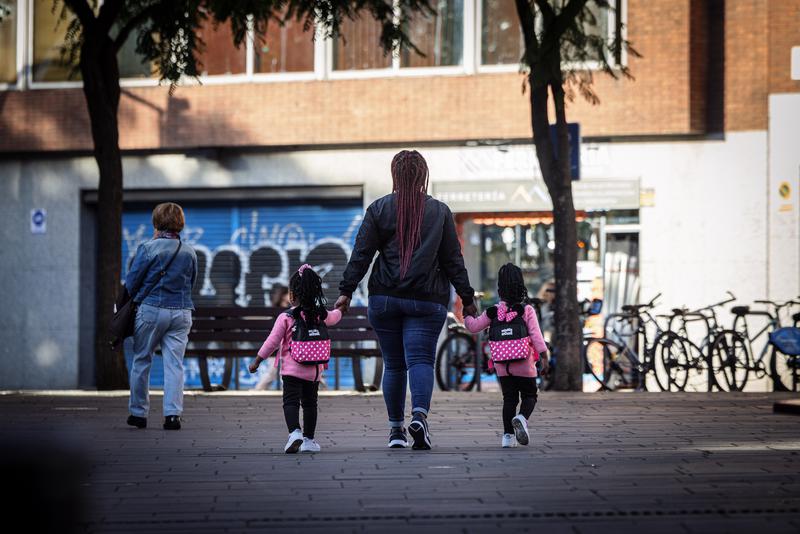Catalonia reaches 8 million inhabitants with 1 in 5 born abroad
Migration drives population increase of 2 million in less than 40 years despite low fertility rate

Catalonia officially has 8 million inhabitants, as of Friday, November 3, 2023, according to the Catalan Statistics Institute (Idescat).
It is 36 years since the population reached 6 million in 1987, leading to a well-known publicity campaign from the Catalan government: 'Som 6 milions'.
The growth of the population by 2 million in the intervening years has been driven mainly by the boom in international migration since the turn of the millennium.
As a result, 20% (1.6 million) of Catalonia's inhabitants today were born abroad.
The fertility rate, on the other hand, has oscillated between 1.3 and 1.5 children per woman, according to population experts consulted by the Catalan News Agency (ACN).
There are only a few countries in the world with lower fertility rates, including Taiwan (1.09), South Korea (1.11), Italy (1.24) and Puerto Rico (1.25).
History of Spanish migration
With fewer babies being born, Catalonia's population growth has been propelled by migration for decades.
From the middle of the 20th century until the 1990s, this was mainly internal migration, with people moving to Catalonia from the rest of Spain.
So much so that in 1991, 30% of the Catalan population had been born elsewhere in Spain, a figure that today has decreased to 15%.
1 in 5 Catalans born abroad
In contrast, foreigners make up an increasingly large proportion of Catalan inhabitants. In 1991, 1.68% of those residing in Catalonia were foreign-born, fewer than 100,000 people.
In 2022, that had increased to 21.2%, or 1.65 million people. In other words, one in every five Catalan inhabitants was born abroad.
The demographic change brought about by international migration has led to a more "complex" and "diverse" society, according to Albert Esteve, director of the Center for Demographic Studies (CED).
"There has been a direct and indirect boost to population, but also of diversity that has made us a more complex society, which we were not used to."
Of the foreign-born population, 31.5% are European (23.7% from the EU and 8.3% from the rest of Europe), 28.2% come from the Americas (19.5% from South America and the rest from North and Central America), 25.5% are from Africa and the remaining 14.6% from Asia and Oceania.
Aging population
The Catalonia of 8 million is home to an older population than the Catalonia of 6 million. The average age of Catalans today is 43.3, compared to 36.3 four decades ago.
"Our natural demographic constants are weaker today," Esteve says, "because we have a smaller younger population having children and many people in advanced age groups. The Catalonia of 40 years ago was much younger."
"We have had a fertility rate of between 1.3 and 1.5 for 40 years, and in the long term, in order not to lose population, it should be 2.1 children per woman."
"The good news is that the extension of life expectancy is rewriting the concept of old age," he says.
At the end of the 1980s, more than half of the population (51.2%) was under 35 years old whereas in 2023, under 35s represented just 36% of the total.
Coast and metropolitan area
Catalonia's 8 million people are densely packed at 242 people/km2. Malta, the Netherlands, Belgium and Luxembourg are the only EU countries with a higher population density. In Spain as a whole the population density is much lower, at 94 people/km2.
But the growth in population in Catalonia over the past four decades has not been evenly spread. In fact, some parts have seen a decrease in population, mainly in rural areas, but also in Barcelona city.
The Barcelona metropolitan area in general, however, has been the focal point of population growth, with 121 of its 125 municipalities increasing between 1987 and 2022.
Coastal and so-called pre-coastal areas have also generally seen marked population growth, shown in darker blues in the map.
The counties that have seen the biggest rise in population density are Baix Penedès, Garraf, Vallès Oriental, Selva, Tarragonès, Maresme, Alt Empordà and Val d'Aran.
On the other hand, the counties that have seen the biggest declines in population density are Berguedà, Barcelonès, Garrigues, Ribera d'Ebre, Pallars Jussà, Priorat and Ripollès.
Explaining the shift in population density within Catalonia, Albert Esteve says: "In a service society, where the vast majority of the population works in this sector, we have to be close by." He notes the paradox of there being regions of Catalonia (even more so in the rest of Spain) that are experiencing population decline while overall population reaches record levels "year after year."
It's a trend he expects to continue, along with the migration boom "that will continue to come," as the demand to be near services such as care for the elderly grows along with Catalonia's ageing population.